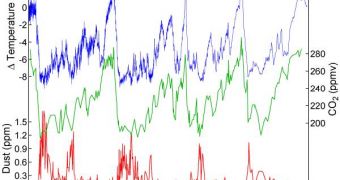Drilling up core samples is one of the most potent instruments that science has of analyzing the planet's past in terms of geological changes that took place over the years. In spite of their massive price tags – at times reaching several millions of dollars per sample – they are still widely used for assessing changes in the Earth's climate over thousands and millions of years, which in turn helps modern experts figure out what the new climate change is all about. But often precious data is lost or compromised by lack of proper storage and freezing equipment, researchers complain.
After miles of cylindrical samples are extracted from the ground, they are transported via ship or train from their original location, most often at or around the poles, to specialized research facilities in Europe and the United States. Here, they are kept at temperatures between -20 and -30 degrees Celsius, but geologists say that these levels, which are relatively higher than those in the ground, destroy the precious chemical composition of the cores, rendering them useless or, worse, misleading.
The main thing researchers look for when analyzing such a sample is the ratio of compounds making it up. As ice forms, it traps inside small bubbles of gas – oxygen, carbon dioxide, nitrogen and others – which have specific isotopes depending on the type of climate that reigned on the planet at the time of their formation. But, as they are being kept at higher temperatures, the gaseous oxygen, for instance, can drift away in the surrounding atmosphere, compromising the readings, and leading scientists to believe that earlier atmospheric conditions were something they really weren't.
For this very reason, geologists and chemists around the world involved in this type of studies are calling for more advanced equipment that would allow them to maintain the samples in a relatively suspended state, where none of the precious gas trapped inside is wasted, Nature News reports. They argue that facilities able to keep the ice and rocks at at least -50 degrees Celsius are required, if the readings collected from the samples are to be considered reliable. They also advocate the creation of several large centers for the samples rather than outfitting many small laboratories with the new capabilities.

 14 DAY TRIAL //
14 DAY TRIAL //